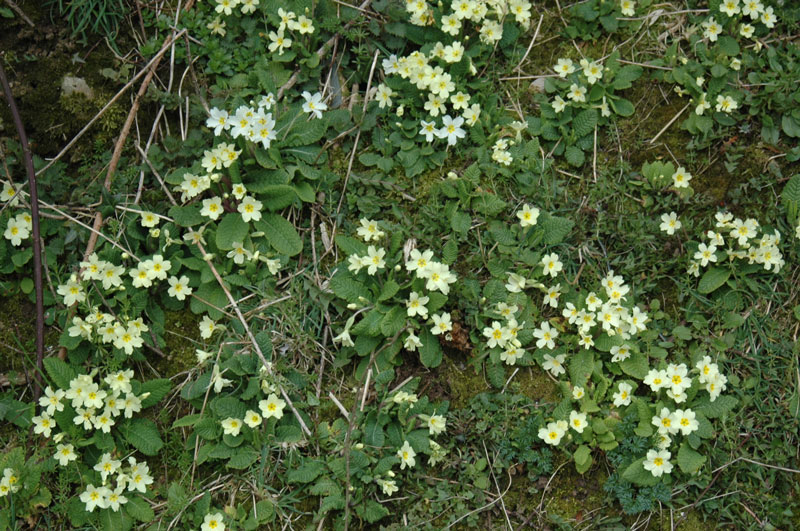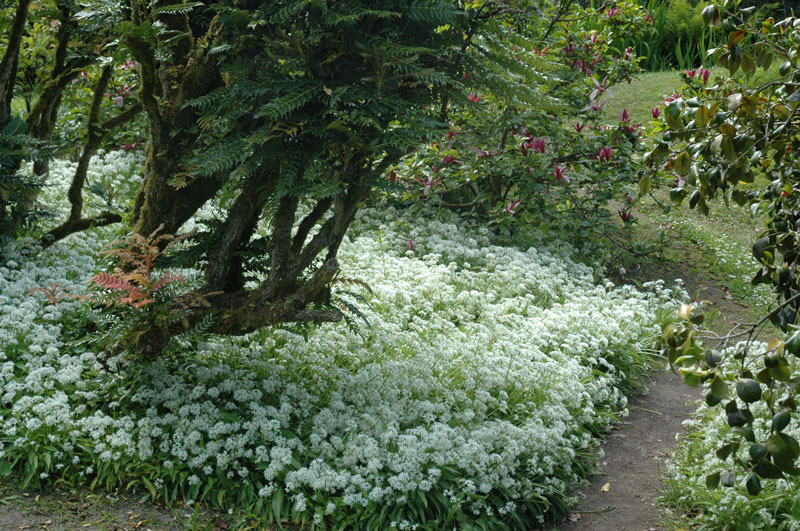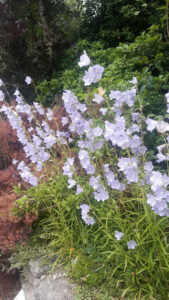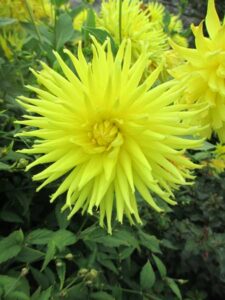Gardening
with Charlie Wilkins
EMOTIONS
When the emotional clutter of Christmas and the New Year have finally become a memory, clear thinking and confidence returns to rejuvenate my faltering spirit. I can then begin to appreciate the emptiness of winter! At first glance, winter speaks of barrenness and desolation, but in fact it hides a lovely truth: the beauty of silence. The trees and shrubs, even the landscape may appear silent, but in truth they are simply resting, so there’s really no need to say anything. They are not thinking about what lies ahead, whether spring is going to be early or late, or what pest or new disease might arrive to torture them.
We too, I believe, could do with a little more silence, reflection, and contemplation at least every January. We worry about so many things and yet few are imperative or essential. That said, Covid and climate change remain extremely worrying and we must continue to meet them head-on, until they are fully resolved.
As gardeners we have found that climate change has in recent years brought about milder winters and it has allowed garden weeds to continue in leaf and stalk without as much as a hard frost to sap their vigor and knock their enthusiasm for invasion. I notice the long trails of speedwell now mixed through the whorled, un-sticky (for now) goosegrass, and find it easy to remove but it’s only one of many. There seems to be a constant procession of all weeds this month and the list includes shepherd’s purse, groundsel, and hairy bittercress.
These, even as I write (and it is January) are rising and spreading. Unfortunately, time has caught up with me and age means that I am reluctant to seek ruthlessly, and totally remove these young offenders, but their rankness mocks my ability to get down regularly to their level. But I can, and do get down, but it takes greater effort and full concentration.

Now, when I go hand weeding, I bring a soft, waterproof kneeler, a bucket for the weeds, and a stainless-steel hand-fork, but if this method is not for you, there are other ways of achieving satisfactory results.
Existing annual weeds can be eliminated this month by smothering them with a two-to-three-inch layer of mulch material. Weeds and their seeds which are deprived of light and air will certainly not live or germinate. Anything in the organic line will suffice, well-rotted manure, garden compost, wood or bark chippings, gravel, pine-needles (wonderful beneath acid-loving rhododendrons and all lime haters) or best of all, ‘GeeUp’ horse manure. As well as smothering weeds, these materials will keep within the soil the moisture we now frown upon and release it when conditions demand. Who could forget the drought conditions on occasions last year, and how plants everywhere were put under overpowering stress? Similar conditions will no doubt return this year but by mulching now, you’ll stave off its worst effects.
Kill existing weeds on drives and gravel areas with Pathclear or Weedol, both of which can be used during cold weather. The former will stay active for six months, the latter will not. It can however be applied to all unwanted soft green foliage even in the coldest conditions. Keep these chemicals clear of ornamentals and on no account treat weeds in lawns.

AN IMMIMENT ARRIVAL
Spring is eager to show us its first flowers, and this causes our creative endeavors to activate and stir. The weather may still be unkind, but winter is on the wane, losing its vicious grip on the land and its occupants. Doubt and hesitation may be the hallmark of the opening days of this month, but the spirit of renewal is strong and every day that passes sees the buds of hope not alone trying to break through but opening to the new light and increasing temperatures.
WINDFLOWERS
Anemones are also known as ‘windflowers’ for they can appear during late spring and early summer when the wind is constantly out of its lair. There are many forms but the Coronaria varieties ‘St.Bridgid’ and ‘De Caen’ can be planted anytime now through to late March. Anemone corms look very unpromising, being quite small, dry, and often wrinkled, so soak in tepid water overnight before planting to help them swell. Plant any which way really for they have neither top nor bottom, but do choose a warm and sheltered sunny spot, about 3” deep and as much apart. Flowers form in summer but dallying too long with planting will delay the onset of early blooms. There is only one point to remember. The coronaria anemones (other varieties too) only open their rays of petals in full sunshine, so they are not for a shady place. I have had a better return from these over the years than many other bulbs, but you must put them in positions they’ll appreciate. They’ll reward you yearly for a decade and more.
THE JANUARY GARDEN 2022
On many occasions over recent years, I meant to mention something unusual about garden snails. Not only have they become fat and bulging, but when wet weather is forecast, they can be found (in our garden) positioned securely, high on all kinds of support! Six to eight feet would not be unusual. Do they know or can they sense when torrential rain is due? It’s uncanny to say the least. If I were living in France, the largest in the garden could surely be sold, for there they are normally bred there for consumption with garlic butter.
It takes up to four years for snails to grow large and in doing so chomp through our choicest delphiniums, lupins, and hostas. To control them I
lay bait in the form of pellets hidden under pieces of slate or tile supported on small stones. The snails and slugs find them easily. The only problem with stamping on snails is they make a disgusting mess on decorative paving!







